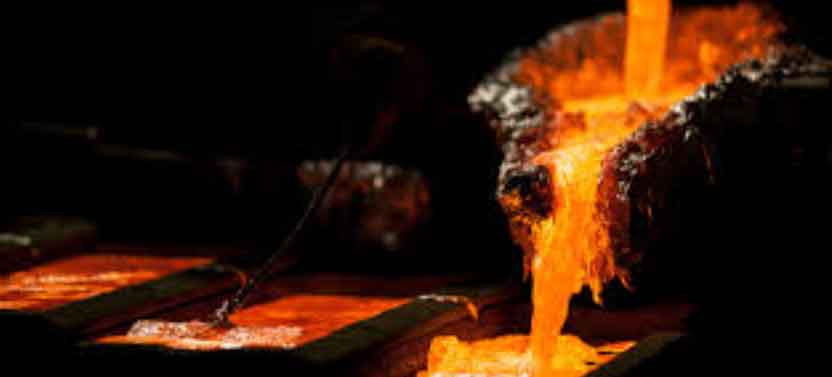
The 20th National Foundry Academic Conference of 27 Provinces (Cities, Autonomous Regions) and 4 Municipalities, coinciding with the 2019 Guangdong Foundry & Die-Casting Technology Exchange Annual Meeting and the Guangdong-Hong Kong-Macao Greater Bay Area Green Development Summit, represents a pivotal convergence for China casting expertise. Jointly organized by regional foundry societies across China, this gathering facilitates critical knowledge exchange on national industrial policies, green manufacturing solutions, and intelligent production systems. The tripartite focus on “Green Foundry·Intelligent Manufacturing·Industry-Research Integration” underscores strategic priorities for China casting sector advancement.
Hosted at Guangzhou Huatai Hotel (23 Xianlie South Road, Yuexiu District) from September 24-27, 2019, the conference features comprehensive technical forums addressing:
| Technical Focus Area | Key Subtopics | Industrial Impact |
|---|---|---|
| Advanced Manufacturing | 3D printing integration, Digital control systems, Precision forming | Production efficiency enhancement |
| Sustainable Solutions | Metal regeneration, Energy conservation, Clean production standards | Environmental compliance |
| Material Innovation | Special-condition alloys, Smart materials, Composite applications | Product performance optimization |
Concurrent with these proceedings, the 2019 China (Guangzhou) International Robotics and Intelligent Equipment Exhibition (September 26-28, China Import and Export Fair Complex) showcased complementary automation technologies critical to China casting modernization.
2018 China Casting Output Analysis
China Casting Association’s authoritative data reveals nuanced market shifts in 2018, with total output stabilizing at 49.35 million tons. The sector’s transition from high-speed to medium-low growth continues, characterized by significant demand restructuring across downstream industries:
| Industry Sector | Demand Change (%) | Market Share (%) |
|---|---|---|
| Automotive | -3.2 (first decline) | 30.0▼ |
| Engineering Machinery | +11.9 | 18.5▲ |
| Rail Transit | +9.0 | 8.2▲ |
| Cast Pipes/Fittings | +7.2 | 15.3▲ |
| Agricultural Machinery | -6.8 | 5.1▼ |
Material-specific output variations reflect these market realignments. The growth rate differential between major casting materials follows:
$$ \Delta G = \frac{(Q_{2018} – Q_{2017})}{Q_{2017}} \times 100\% $$
where \(\Delta G\) represents annual growth rate and \(Q\) denotes quarterly output volume.
| Material Type | 2017 Output (MT) | 2018 Output (MT) | Growth Rate (%) | Market Share (%) |
|---|---|---|---|---|
| Gray Iron | 21.15M | 20.65M | -2.4 | 41.8▼ |
| Ductile Iron | 13.75M | 14.15M | +2.9 | 28.7▲ |
| Cast Steel | 5.58M | 5.78M | +3.6 | 11.7▲ |
| Al/Mg Alloys | 7.30M | 7.15M | -2.1 | 14.5▼ |
The centrifugal casting pipe sector propelled ductile iron growth, while rail transit and heavy machinery drove cast steel expansion. Aluminum alloy decline correlates with automotive/motorcycle production reductions, demonstrating China casting sector’s sensitivity to consumer markets. Material distribution follows the relationship:
$$ S_m = \frac{O_m}{\sum_{i=1}^{n} O_i} \times 100\% $$
where \(S_m\) is material-specific market share and \(O_m\) represents output per material category.
Technical Exchange Mechanisms
Conference proceedings emphasized research commercialization through 186 technical papers across six thematic clusters. The knowledge transfer framework operates through:
- Academic-industry matchmaking sessions
- Standardization working groups
- Technology licensing platforms
- Process optimization clinics
Research priorities reflected China casting evolution toward integrated solutions, particularly hybrid manufacturing approaches combining traditional techniques with additive manufacturing. The technical merit evaluation matrix applied to submissions weighted innovation (40%), applicability (30%), and sustainability impact (30%).
Strategic partnerships between 34 universities (including Tsinghua, Huazhong University of Science and Technology) and industry players yielded 17 technology transfer agreements during the conference, accelerating deployment of:
- AI-driven defect detection systems
- Waste sand regeneration protocols
- Low-pressure die-casting optimization algorithms
Ongoing collaboration occurs through Guangdong Foundry & Die-Casting Society’s digital platforms (gdfdry@scut.edu.cn; WeChat: gdfdry), maintaining momentum between biennial gatherings. This infrastructure sustains China casting sector’s transition toward Industry 4.0 standards while addressing immediate technical challenges through expert consultation networks.
